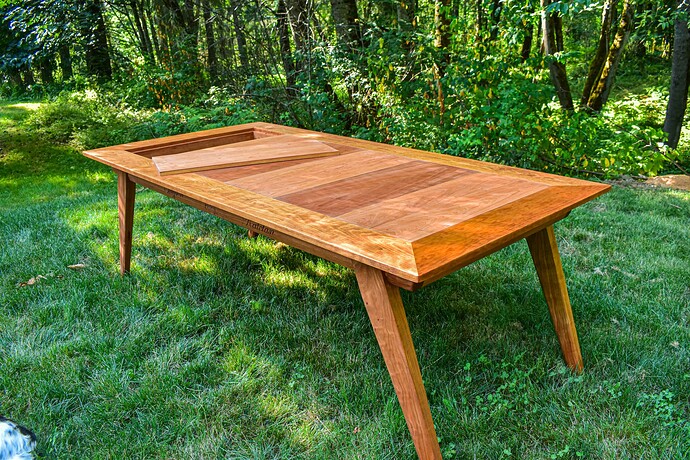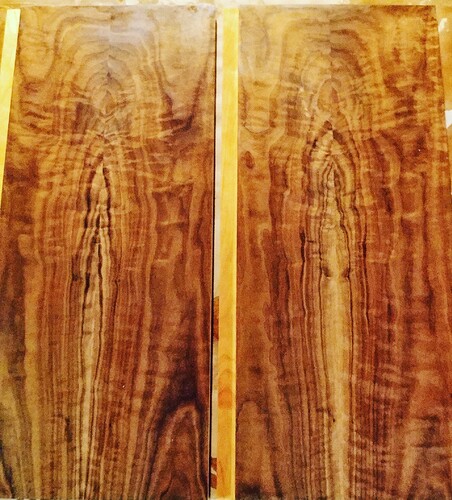I built a gaming table awhile back, basically a table with a “well” for putting board games in to play. I never really came up with a cover, but now that our main gaming partners, my daughter and her husband have 2 very small children, boardgaming really isn’t a thing we get to do any more and my wife would like to turn it into a regular table when guests come.
I’m thinking of creating leaves for the top of the table. I was going to do a maple and walnut combination just like the table itself. The question is: What to use as the main material for the leaves. I’ve heard I could use solid wood and I could join the boards together with a domino joiner so that I wouldn’t have to pay a fortune for very wide wood. However, I’ve also been told the better choice would be a hardwood plywood because plywood is more stable and there is less chance of warping over time. I haven’t really seen much warping in other wood I’ve used but plywood also would save a lot of money so I’d appreciate some thoughts anyone has here.
How do you feel about veneers?
@stepho I don’t really have a problem with them if you are talking about on the plywood. I don’t intend for the table to have “heavy” use. As far as doing the veneering myself, that would be another option but honestly more than I feel like messing with. If I was doing this for a “production” project the savings in material might compensate for the extra time I’d have to mess with it. Is there a good place to buy veneers in Austin? I’ll admit I was spoiled in Detroit by probably having one of the best veneer shops in the country.
Hardwood plywood is great for table tops. The grain tends to be more uniform (which can be a positive or negative). It is more stable. I have seen some solid hardwood I have cut remain stable. I have seen other pieces not. Varies piece to piece. Plywood is stable.
I’ve built several gaming tables. There are a lot of options in terms of how to create the leaves.
Hardwood leaves
All wood moves, depending on the quality of the lumber, the type, and the humidity changes where the furniture will live effect this.
Personally my next gaming table will use hardwood leaves. I won’t be joining boards together to make larger leaves.
I will likely pick something like 8 in wide boards ( +/- depending on the overall width of the gaming area to get boards that are consistent in width to fill the space. The two main reasons for this are ease of replaceability to mill a new board and throw it into the mix and time saving over constructing a matching leaf.
Plywood
Using some high-quality plywood with some version of edge banding would work fine. From my perspective its very easy to damage plywood in a tabletop configuration, and difficult to repair. Plywood can also twist and cup.
Constructed leaves.
I’ve used this method on several tables using shop cut veneers and thin commercial veneers.
The idea here is to use very stable plywood or MDF as a core with a hardwood frame using very dimensionally stable hardwood. Wrapped with the veneer.
The shop cut veneer I’ve done is about 1/8 of an inch which makes it pretty durable and easy to repair minor scratches.
This is a ridiculously amount of work however.
I did one set of leaves using commercially purchases veneers, and they came out looking very good. Repairs on them would be problematic same as using commercial plywood.
Even with taking a lot of precautions I’ve had constructed leaves twist and cause issues sitting flush on the table.
If you’d like to talk through this let me know.
Somehow I didn’t get notified of this reply.
I generally get hardwood plywood like this from a specialty shop that serves the cabinet industry as I find it’s a lot higher grade. Besides, I’m maybe using a sheet of it so the extra cost isn’t that much.

